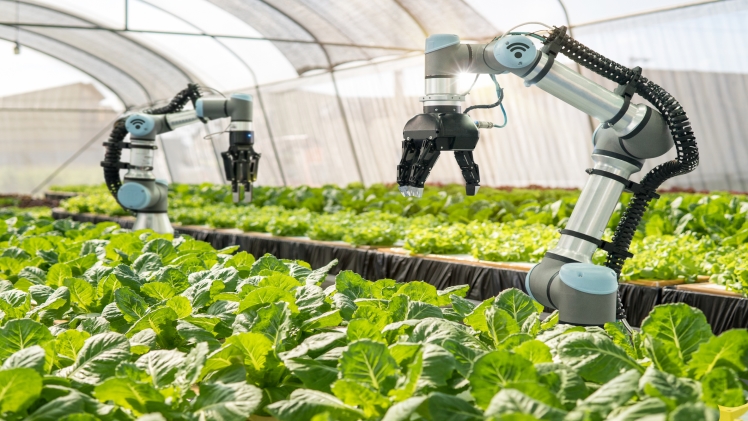Agribusiness is a complex industry that is influenced by several megatrends. They pose many problems in the agricultural sector. Agribusiness faces the challenge of increasing demand for farm products due to population growth. In addition, the industry is influenced by the Health & Wellness trend, which means consumers are interested in healthy and organic food.
Agribusiness is also facing the challenge of global warming, so farms must make efforts and introduce modern field monitoring technologies to increase sustainability. They also use different indices, including NDWI to observe the state of the crops. All the problems associated with these phenomena are difficult to solve, especially given that agricultural business participants do not have a common opinion about the most important.
Megatrends are driving the globalization of the agri-food industry. It means building complex supply chains around the world to meet consumer demand for fresh and healthy food. Companies have to connect their production and distribution chains. They also strive to ensure the security of supply and increase resilience to fluctuations in commodity prices.
Read more about: nenmoav7
Many of the problems facing the agricultural sector today can be solved through innovation. However, access to finance is an obstacle to developing and implementing technological innovations in the agri-food sector. What is the solution to this problem? There are two possible ways. The first is to invest in basic science from universities and specialized institutes, but this may take too long. The second approach is more promising and consists in using technologies that have already matured in related industries and repurposing them for agriculture.
Precision agriculture
Precision agriculture is a relatively new farming practice and will definitely contribute to the future of agri-food. This concept originated in the United States in the 80s with the first differential fertilization maps, which were based on soil analysis. However, this idea has gained global acceptance in the last five years. It happened thanks to the development of mobile technologies. In addition, high-speed internet has become more accessible, as has accurate satellite data.
This practice includes observing the condition of fields and crops and measuring and responding to change. Precision agriculture works with various technologies such as satellite imagery and sensors that track changes in plant and soil conditions.
Thus, farmers can determine precisely in which areas agrochemicals should be applied. It helps save resources as farmers do not need to evenly cover all fields with fertilizer or treat them with pest control. All the procedures are carried out only for those plants that need them. In addition, reducing the use of agrochemicals has a beneficial effect on the environment, including the condition of groundwater and water bodies. Thanks to artificial intelligence and GPS systems, agricultural machinery can work semi-autonomously for agriculture.
Foresighting as a key lever for success
The complex tasks of the agro-industrial sector can be solved with the help of technologies from related industries. Solving the complex problems described above may involve developing technologies from a related industry to create a new approach. However, enterprises rarely have a long-term view of what problems will be solved and what technologies will help.
Therefore, foresight is the critical solution for unlocking the potential of innovations from related industries. In addition, the anticipation of associated industries helps make smarter investment decisions. Often, technologies promoted by companies are not ready for large-scale deployment. It happened, for example, with the use of microalgae for the production of valuable nutrients.
Three steps can be taken to tackle the problems of the agri-food sector. They will help meet future challenges and improve industry governance. The first step is to agree on the issues to be solved in the future. IT includes studying megatrends and identifying business-relevant challenges. It is also necessary to determine what tasks are a priority.
The second important step is to conduct a ‘’horizon scan’’. It is held for technologies in adjacent
industries and includes solving urgent problems combined with experts from related industries. Preparation is essential during horizon scanning, including workshops to align market forces and competitive trends before identification of appropriate technologies. Horizon review involves asking and resolving questions about the maturity of the technology, the attractiveness of the market, how well the technology has been tested, the costs that are required to adopt the technology, and the actions taken by competitors.
The third step is technology transfer to innovators. Thus, it becomes possible to influence those who can provide a solution in related industries. Although some companies show their future needs and forecasts in their annual reports, future scenarios are not published. Anticipating future development can help make significant progress.
All of these steps will help you determine the future needs of your business. You can also understand which technologies are capable of solving emerging problems and which technologies are already mature enough for their implementation in the agro-industrial sector. It will save you from unpleasant surprises, as well as provide an opportunity for timely problem-solving.
Read more about:

